Speed matters for WordPress websites. When visitors wait more than three seconds for a page to load, they often leave. This leads to lost opportunities and revenue for business websites. Content Delivery Networks (CDN) solve this challenge by distributing your website content across global servers, delivering it faster to users worldwide.
As a web design and development agency in Chicago, we’ve seen how implementing the right CDN solution can transform website performance for businesses across various industries. Our clients often ask which CDN plugin offers the best balance of performance, ease of use, and cost-effectiveness for their WordPress sites.
In this comprehensive guide, we’ll explore the top CDN plugins for WordPress, explain how they work, and help you choose the right one for your specific needs. Whether you’re running a small business website or a high-traffic e-commerce store, this article will help you make an informed decision to improve your site’s performance.
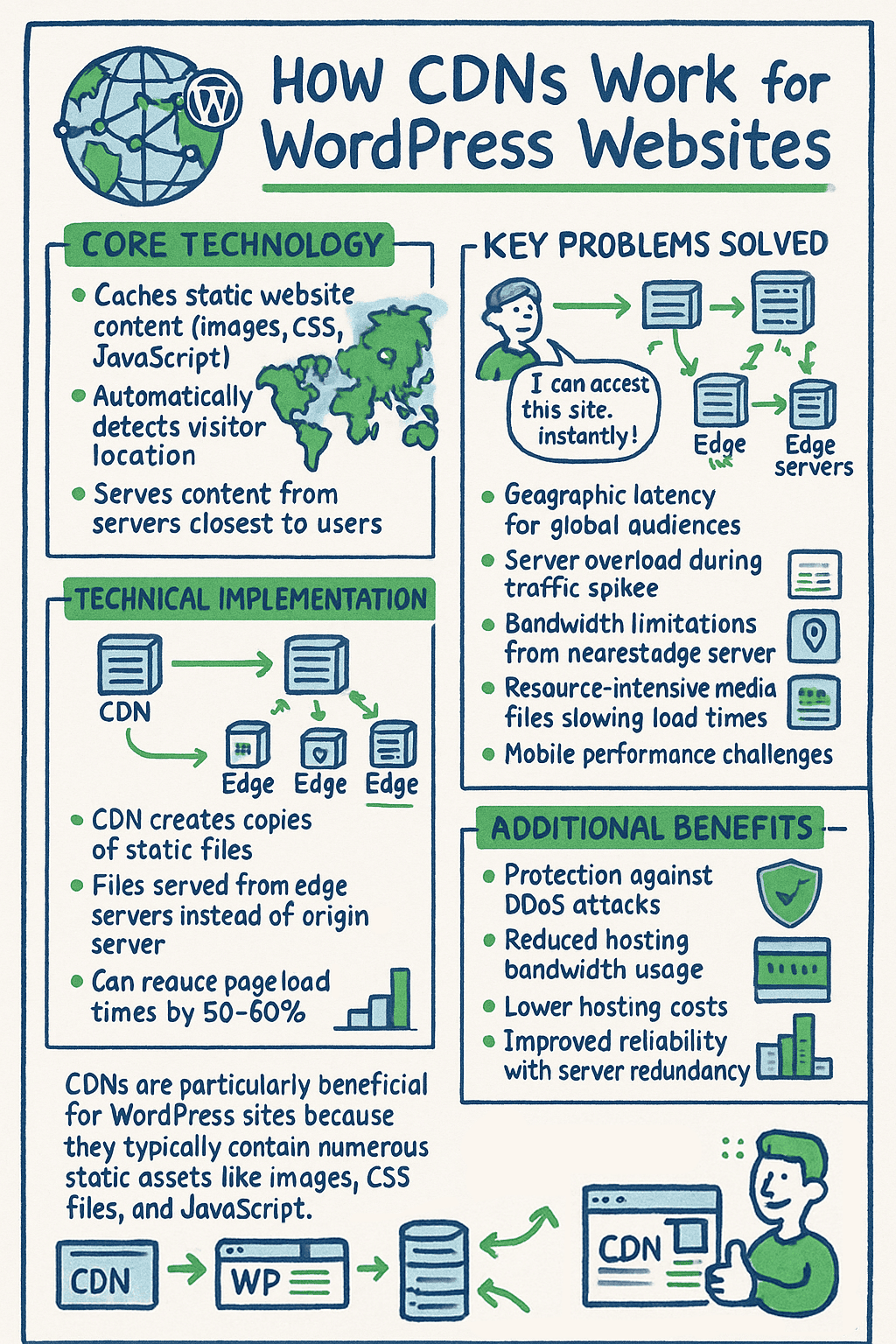
Understanding CDN and Its Importance for WordPress Sites
A Content Delivery Network (CDN) is a system of distributed servers that delivers web content to users based on their geographic location. Instead of loading all content from your origin server (which might be far from some visitors), a CDN serves cached versions of your content from servers closer to your users.
WordPress websites particularly benefit from CDNs because they typically contain numerous static assets like images, CSS files, and JavaScript. When these files are served from a nearby CDN edge server rather than your main hosting server, the result is dramatically faster page loading.
The technology works by creating copies of your static assets and storing them on multiple servers around the world. When a visitor accesses your site, the CDN automatically detects their location and serves content from the nearest edge server, reducing the physical distance data must travel.
Research shows that using a content delivery network can reduce page load times by 50-60% depending on your visitor locations and site configuration. This performance boost directly impacts user experience and conversion rates.
This approach solves several key WordPress performance challenges:
- Geographic latency issues for global audiences
- Server overload during traffic spikes
- Bandwidth limitations from shared hosting plans
- Resource-intensive media files slowing page loads
- Mobile performance optimization requirements
The benefits extend beyond just speed. CDNs also provide an additional layer of security against common threats like DDoS attacks and can significantly reduce your hosting bandwidth usage, potentially lowering costs.
Key Benefits of Using a CDN Plugin for WordPress
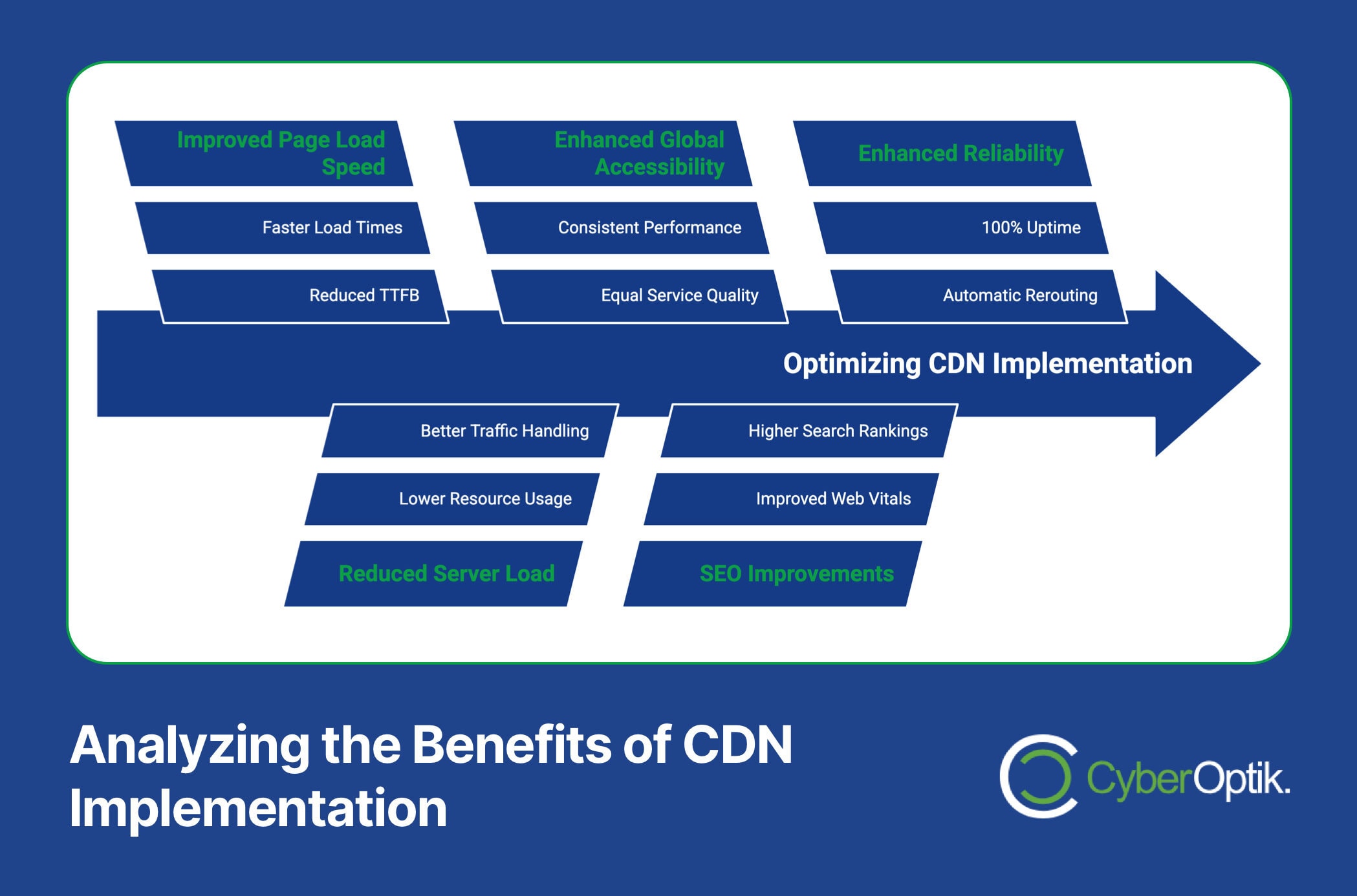
Implementing a CDN through a dedicated WordPress plugin offers significant advantages for website owners. Let’s explore the most important benefits you can expect after proper implementation:
Dramatically Improved Page Load Speed
The most immediate benefit of using a CDN is faster page loading. Kinsta’s CDN reduced Time to First Byte (TTFB) from 136 ms to 37 ms and total load times from 1.45 seconds to 788 ms in Stockholm tests. (Source: Kinsta)
This speed improvement directly impacts user experience, particularly for visitors accessing your site from locations far from your hosting server. Faster sites lead to better engagement metrics, increased page views, and higher conversion rates.
When pages load quickly, visitors stay longer and explore more content. This reduces bounce rates and increases the likelihood of conversions, whether that’s signing up for a newsletter, making a purchase, or contacting your business.
Reduced Server Load and Resource Usage
By offloading static content delivery to a CDN, your origin server experiences significantly less strain. This allows your server to focus its resources on dynamic content generation, database queries, and other essential WordPress functions.
The reduction in server load is particularly beneficial for websites on shared hosting plans or during periods of high traffic. Your site remains responsive even when visitor numbers surge, helping you maintain performance consistency.
For many of our clients, this server load reduction has been as valuable as the speed improvements. It ensures their websites stay responsive during marketing campaigns or when featured in media.
Enhanced Global Accessibility
For businesses with international audiences, a CDN ensures consistent performance regardless of visitor location. Without a CDN, visitors from distant regions might experience frustratingly slow load times compared to those closer to your server.
This global performance consistency is crucial for maintaining a professional image and providing equal service quality to all users. It’s particularly important for e-commerce sites, where slow loading directly impacts conversion rates.
We’ve observed that international traffic often shows the most dramatic improvements after CDN implementation, with load time reductions of 60% or more for visitors in regions far from the origin server.
Improved SEO Performance
Site speed is a confirmed ranking factor for search engines like Google. Implementing a CDN can positively impact your SEO efforts by improving key performance metrics that search engines consider when determining rankings.
Better Core Web Vitals scores, reduced bounce rates, and increased time on site all contribute to improved search visibility. This makes a CDN an essential component of any comprehensive SEO strategy.
Better Reliability and Uptime
Quality CDN services maintain impressive reliability metrics. Kinsta’s platform, for example, maintains 100% uptime and 99.99% reachability in independent tests. (Source: CyberNews)
The distributed nature of CDNs creates inherent redundancy – if one edge server experiences issues, traffic automatically routes to the next closest server. This redundancy helps maintain site availability even during regional outages or server failures.
To summarize the key benefits of implementing a WordPress CDN plugin:
| Benefit | Impact on Your WordPress Site |
|---|---|
| Faster Load Times | 50-70% reduction in page load times for global visitors |
| Reduced Server Load | 20-40% decrease in origin server resource usage |
| Global Performance | Consistent experience for visitors worldwide |
| SEO Improvements | Better Core Web Vitals and ranking potential |
| Enhanced Reliability | Improved uptime and performance consistency |
With these benefits in mind, let’s examine the top CDN plugins available for WordPress websites.
Top CDN Plugins for WordPress (2023 Comparison)
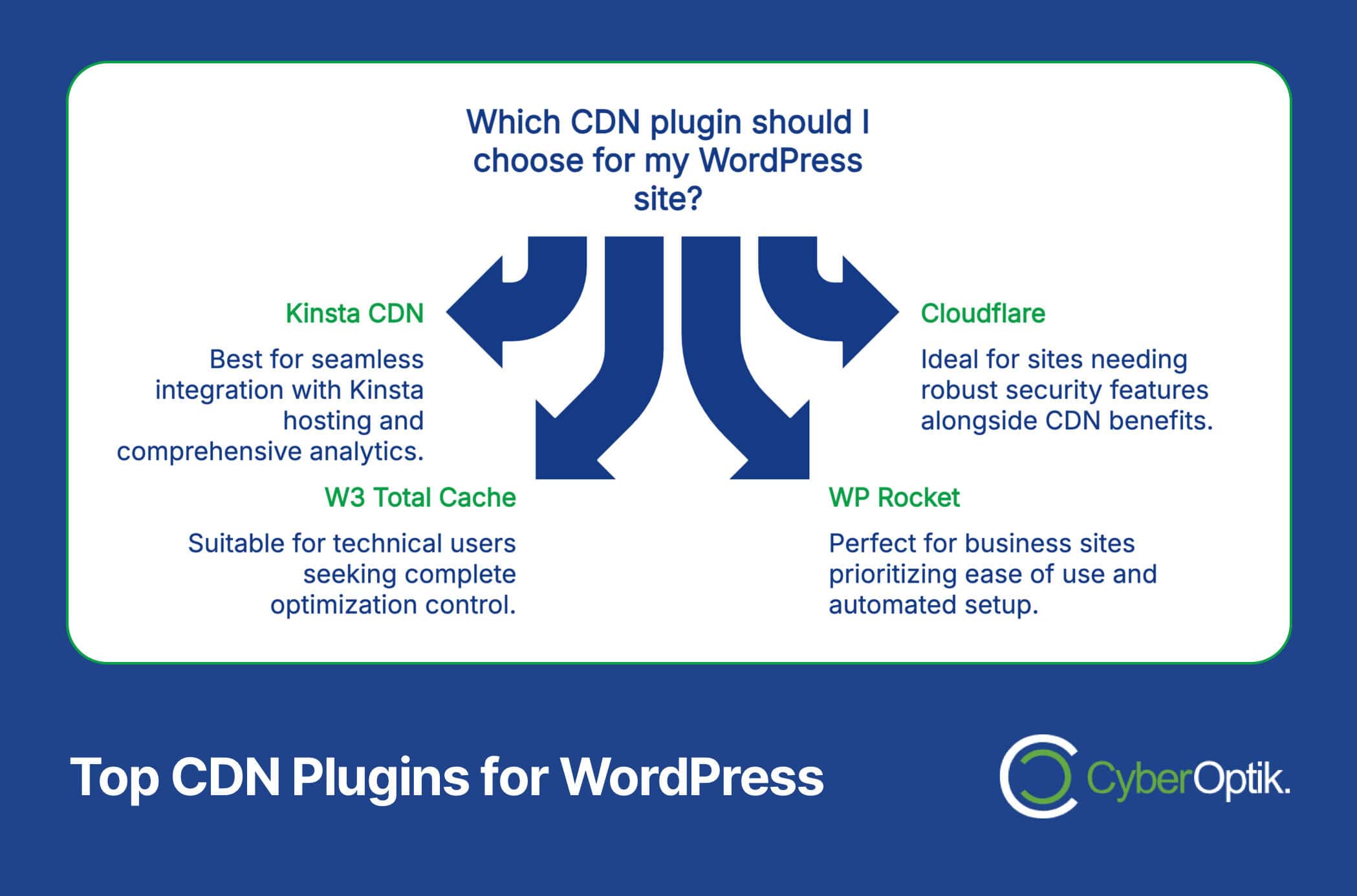
When selecting a CDN plugin for WordPress, you’ll find several excellent options with varying features, pricing models, and integration methods. Here’s our detailed analysis of the top contenders:
Kinsta CDN
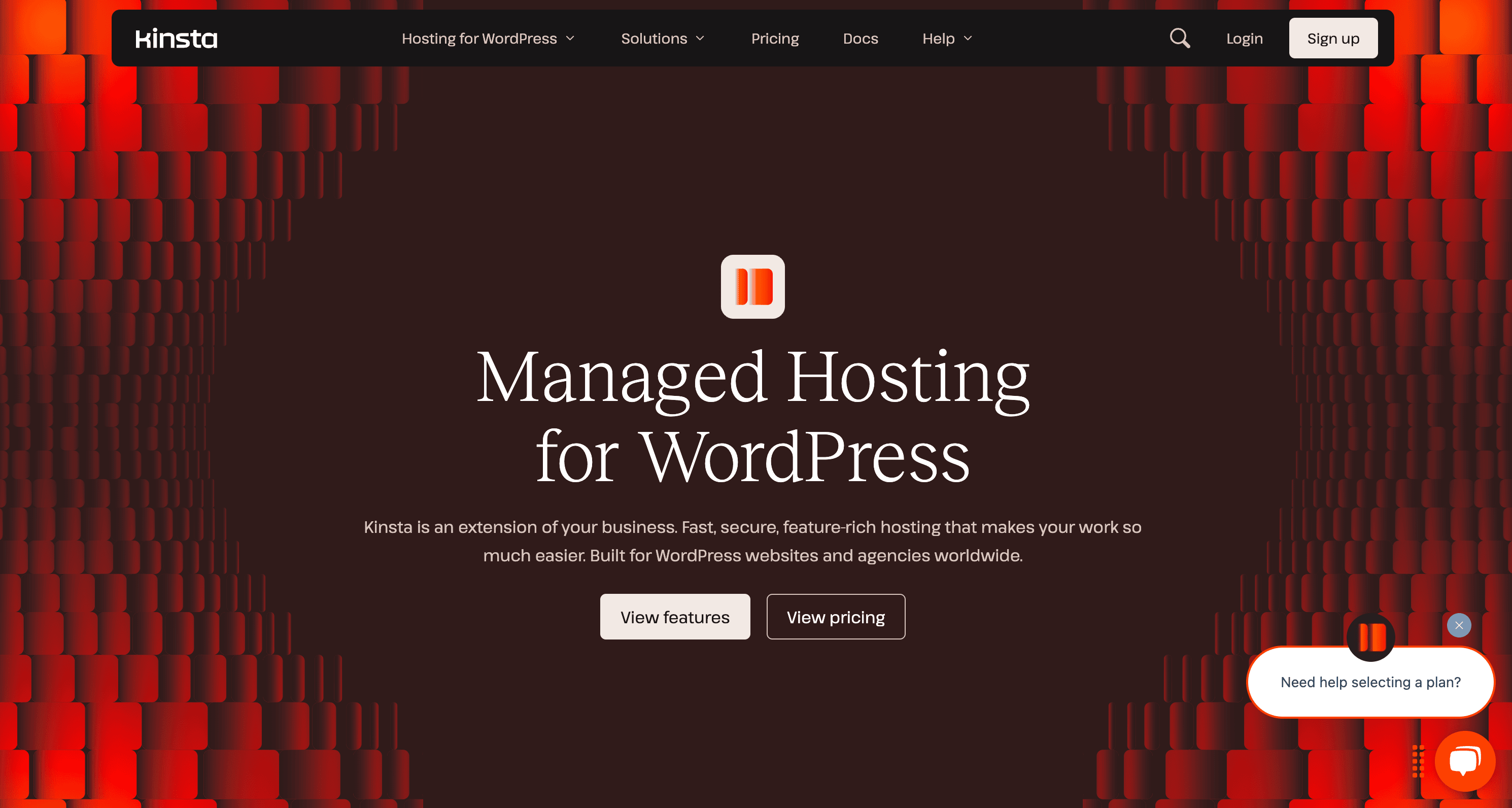
Kinsta’s integrated CDN solution stands out for its seamless integration with their managed WordPress hosting platform. The service uses Google Cloud Platform infrastructure with 2-minute server health checks to ensure optimal performance.
Key strengths include its comprehensive dashboard that tracks CDN bandwidth usage, top files by requests/bytes, and file extensions consuming most bandwidth.
The platform also provides built-in CDN analytics showing hourly bandwidth comparisons and optimization opportunities, making it easier to identify and resolve performance issues.
While not available as a standalone plugin (it’s integrated with Kinsta hosting), this solution offers excellent performance for businesses that choose Kinsta as their WordPress hosting provider.
Cloudflare
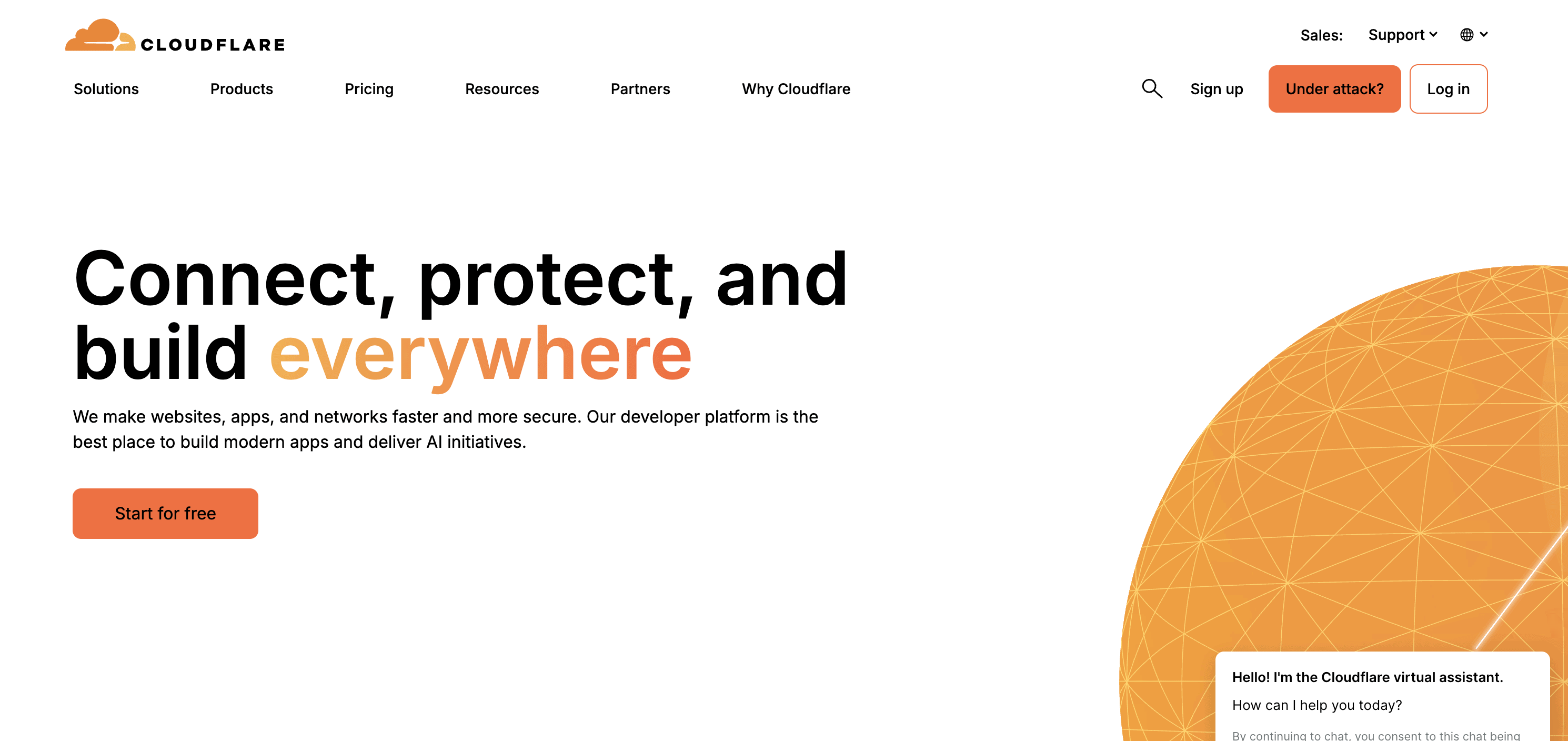
Cloudflare is one of the most popular CDN providers, offering both free and premium tiers. Their WordPress integration comes through either their official plugin or through third-party connectors like Cloudflare Flexible SSL.
The free tier provides access to Cloudflare’s global network, basic DDoS protection, and shared SSL certificates. Premium plans add features like image optimization, advanced security rules, and priority routing.
Cloudflare stands out for its comprehensive approach that combines CDN functionality with security features, making it an all-in-one solution for performance and protection. The service is particularly strong for sites needing robust security alongside performance benefits.
W3 Total Cache

This popular caching plugin includes CDN integration as part of its comprehensive performance optimization toolkit. W3 Total Cache works with multiple CDN providers, allowing users to choose their preferred network.
The plugin handles file minification, browser caching, and database optimization alongside CDN integration. This all-in-one approach makes it attractive for users who want comprehensive performance improvements beyond just CDN implementation.
While the free version offers solid functionality, the premium version adds features like fragment caching and enhanced security. The main advantage is flexibility in CDN provider selection while maintaining a unified dashboard for all optimization settings.
WP Rocket
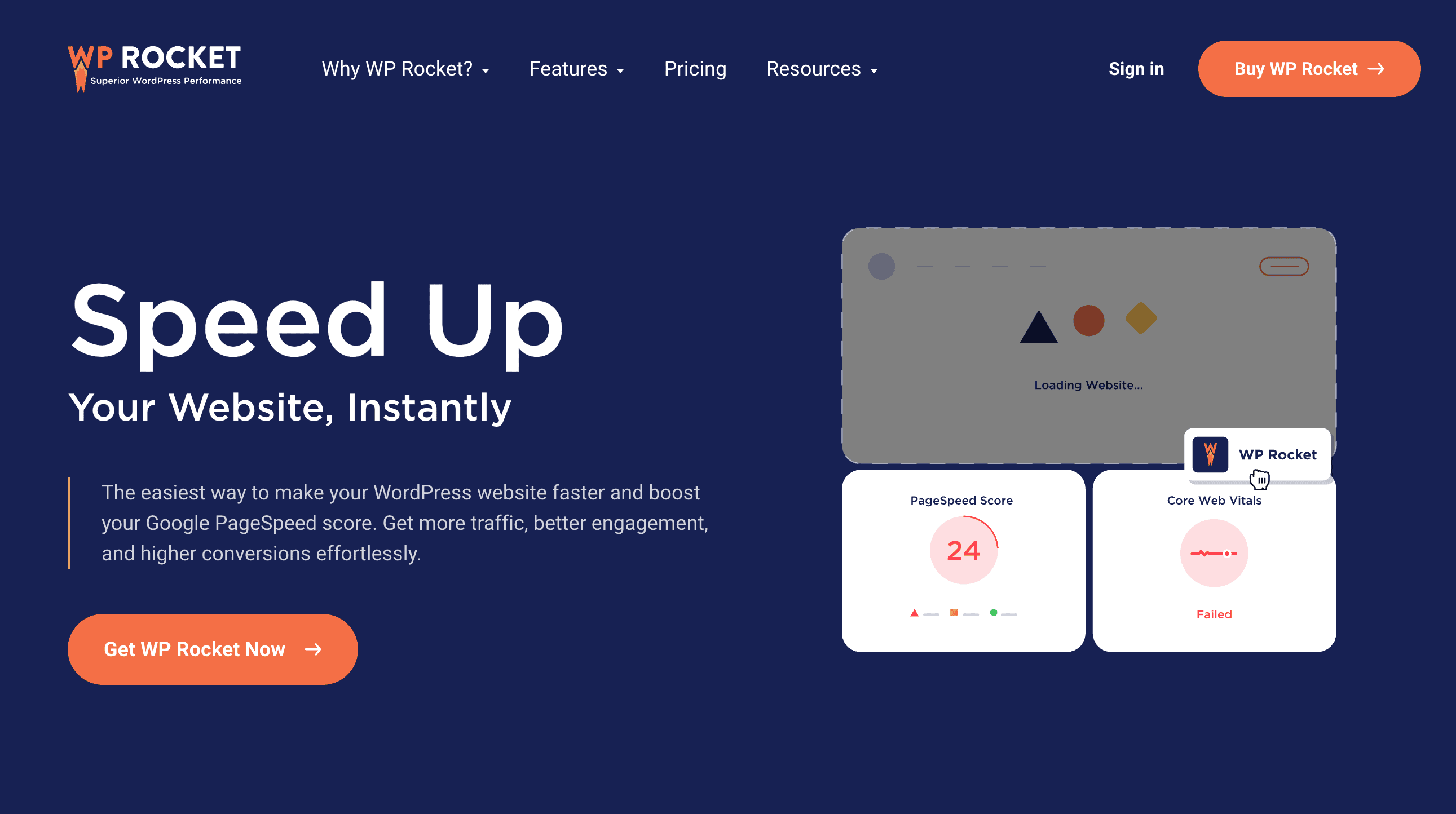
WP Rocket is a premium caching plugin that includes CDN integration among its features. Known for its user-friendly interface, it makes CDN setup accessible even to WordPress beginners.
The plugin automates many optimization processes alongside CDN implementation, including lazy loading images, file minification, and browser caching. This comprehensive approach delivers excellent performance improvements with minimal configuration required.
While not free, WP Rocket’s straightforward setup and reliable performance make it worth considering for business websites where time savings and ease of use are priorities.
BunnyCDN
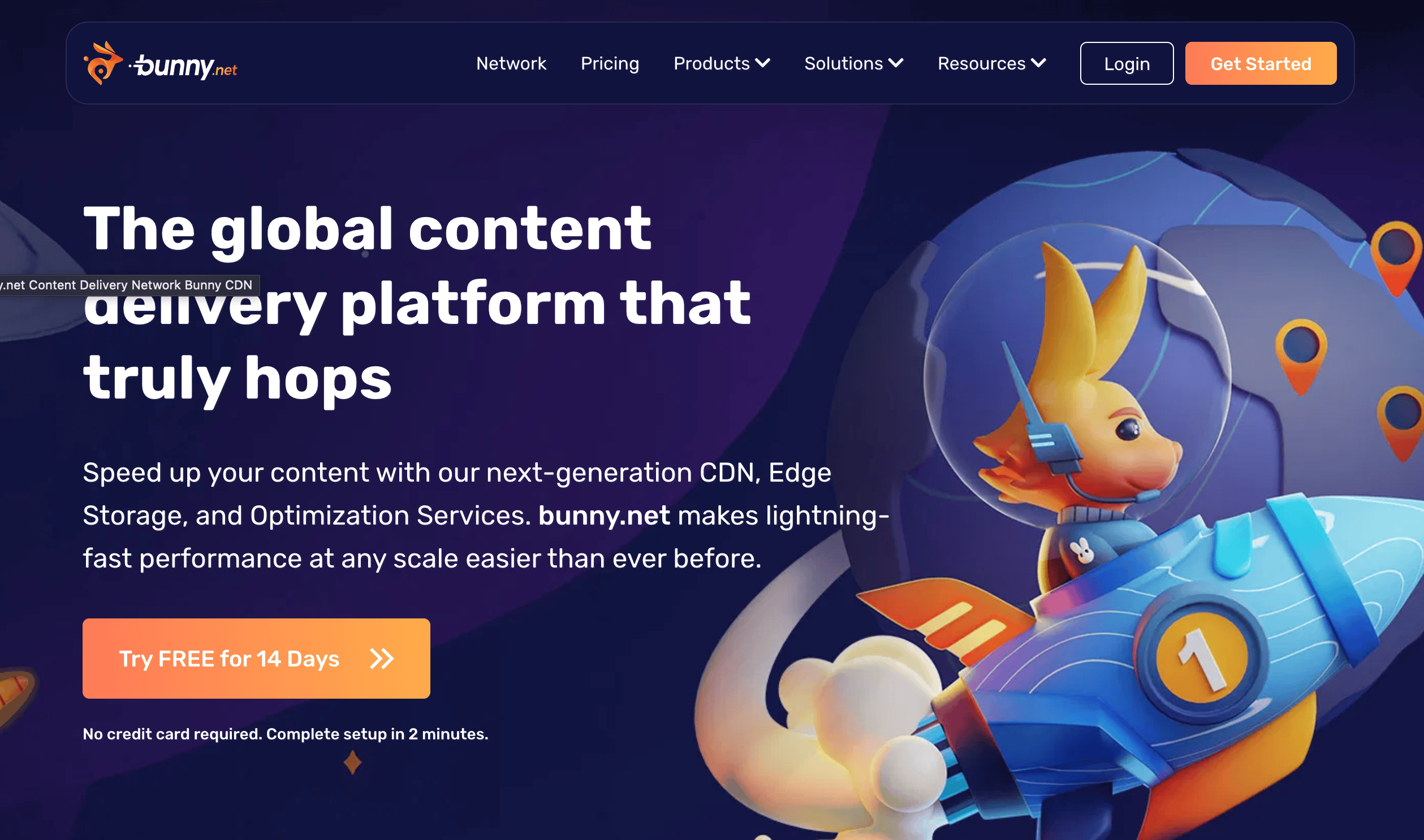
BunnyCDN offers one of the most cost-effective CDN solutions for WordPress. Their WordPress plugin provides simple integration with their affordable CDN service, which charges based on bandwidth usage rather than flat monthly fees.
The service includes image optimization, global network coverage, and simple pull-zone setup. Their pricing starts at just $1 per month for 100GB of traffic, making it accessible even for small websites with limited budgets.
BunnyCDN is particularly appealing for growing websites that need CDN benefits without enterprise-level pricing. Their pay-as-you-go model ensures you only pay for what you actually use.
Comprehensive Comparison of Top CDN Plugins
To help you compare these options more easily, we’ve created a detailed comparison table highlighting the key features, pricing, and ideal use cases for each solution:
| CDN Plugin | Key Features | Free Option | Premium Pricing | Best For |
|---|---|---|---|---|
| Kinsta CDN | Built-in analytics, Google Cloud infrastructure, Automatic setup | No | Included with hosting | Kinsta hosting customers seeking seamless integration |
| Cloudflare | Global network, DDoS protection, Security features | Yes | $20/month+ | Sites needing security alongside performance |
| W3 Total Cache | Multiple CDN support, Caching, Minification | Yes | $99/year | Technical users wanting complete optimization control |
| WP Rocket | User-friendly, Automated optimization, CDN integration | No | $49/year | Business sites prioritizing ease of use |
| BunnyCDN | Low cost, Pay-per-use, Simple setup | No | $1/month+ | Budget-conscious sites with growing traffic |
Each of these solutions offers unique advantages, and the best choice depends on your specific needs, technical comfort level, and budget constraints. Next, we’ll examine how to select the right option for your particular situation.
How to Choose the Right CDN Plugin for Your WordPress Site
Selecting the ideal CDN plugin requires understanding your website’s specific needs and constraints. Here’s a systematic approach to making the right choice:
Assess Your Website Type and Content
Different websites have varying CDN requirements based on their content and audience. The first step is identifying which category best describes your site.
E-commerce sites need strong image optimization capabilities and robust security features to protect customer data. Media-heavy blogs benefit from CDN solutions with generous bandwidth allowances and video delivery options.
Corporate websites typically prioritize reliability and professional support options, while membership sites need advanced security features and dynamic content handling capabilities.
| Website Type | CDN Priority Features | Recommended Solutions |
|---|---|---|
| E-commerce Store | Image optimization, Security, Global performance | Cloudflare, Kinsta CDN |
| Media-Heavy Blog | Bandwidth efficiency, Image/video optimization | BunnyCDN, WP Rocket |
| Corporate Website | Reliability, Professional support, Analytics | Kinsta CDN, Cloudflare Premium |
| Membership Site | Security, Dynamic content handling, SSL | Cloudflare, W3 Total Cache Pro |
Start by identifying which category best matches your website, then prioritize CDN features accordingly.
Consider Your Technical Comfort Level
CDN implementation complexity varies significantly between solutions. Be honest about your technical skills when making a selection.
For beginners with limited technical knowledge, look for plugins offering one-click setup and minimal configuration requirements. WP Rocket and host-integrated options like Kinsta CDN provide the simplest implementation paths.
If you have moderate technical skills, plugins like W3 Total Cache offer more customization while still providing guided setup processes and documentation.
For developers or technical professionals, solutions offering advanced configuration options and API access might be preferable, allowing for custom implementation strategies.
Evaluate Your Budget Constraints
CDN costs vary widely, from free solutions to enterprise-level services. Your budget will naturally narrow your options.
Free options like Cloudflare’s basic plan provide essential CDN functionality without financial investment, making them suitable for small websites and blogs.
Mid-range solutions ($10-50/month) like BunnyCDN or WP Rocket strike a balance between performance and affordability for growing businesses.
Premium services (included with high-end hosting or $100+/month) provide enhanced performance, dedicated support, and additional features suitable for high-traffic or business-critical websites.
Analyze Your Traffic Patterns and Audience Location
Understanding your traffic distribution helps identify CDN requirements that matter most for your specific audience.
For sites with primarily local traffic, a CDN with strong regional presence in your target area may be more important than global coverage.
Websites with international audiences should prioritize CDNs with truly global server distribution to ensure consistent performance worldwide.
Consider traffic spikes as well – some CDNs handle sudden traffic surges better than others, which is crucial for sites with periodic high-traffic events.
Key Decision Factors
When making your final selection, consider these critical factors:
- Integration simplicity with your existing WordPress setup
- Compatibility with other plugins and themes you’re using
- Quality of analytics and performance reporting
- Availability of support when issues arise
- Scalability as your website grows
The right CDN plugin balances these factors according to your specific priorities. For many business websites, the convenience and performance of host-integrated solutions like Kinsta CDN offer significant advantages, while budget-conscious site owners might prefer the flexibility and pricing of options like BunnyCDN.
Implementation and Setup Guide for WordPress CDN
Once you’ve selected the right CDN solution for your WordPress site, proper implementation is crucial for optimal results. Here’s a general implementation process that applies to most WordPress CDN plugins:
Preparation Steps
Before activating your CDN, complete these important preparation tasks to ensure a smooth transition.
Back up your website completely, including files and database. This ensures you can restore your site if any issues occur during CDN implementation.
Document your current performance metrics using tools like Google PageSpeed Insights, GTmetrix, or Pingdom. This provides a baseline for measuring CDN impact.
Review your media library and consider running an image optimization plugin first. Optimized images will consume less CDN bandwidth and load even faster.
Basic CDN Implementation Process
While specific steps vary by provider, most WordPress CDN implementations follow this general process:
- Sign up for your chosen CDN service and obtain any necessary API keys or credentials
- Install and activate the provider’s dedicated WordPress plugin (or a compatible third-party plugin)
- Enter your CDN credentials in the plugin settings
- Configure which content types should be served via CDN (typically images, CSS, and JavaScript files)
- Initialize the CDN connection according to plugin instructions
After completing these steps, your CDN should begin caching and serving your static content. Verify proper implementation by checking your site’s source code – URLs for static assets should now point to your CDN domain rather than your website’s domain.
Advanced Configuration Options
For optimal performance, consider these advanced configuration options if your chosen CDN and plugin support them:
| Configuration Option | Description | Benefit |
|---|---|---|
| CORS Headers | Configure Cross-Origin Resource Sharing headers | Prevents resource loading errors for assets served from CDN |
| Browser Cache TTL | Set Time-To-Live for browser caching | Reduces repeat requests for returning visitors |
| Origin Shield | Add intermediate caching layer between CDN edges and origin | Reduces load on origin server during cache misses |
| Image Optimization | Enable automatic image compression and format conversion | Further reduces file sizes and improves loading speed |
These advanced settings can significantly enhance CDN performance, though they may require more technical knowledge to implement correctly.
Implementation Method Comparison
Several approaches exist for implementing a CDN with WordPress, each with different complexity levels and benefits.
| Implementation Method | Difficulty | Flexibility | Best For |
|---|---|---|---|
| Host-Integrated CDN | Easiest | Limited | Users wanting simple, automatic setup |
| Dedicated CDN Plugin | Easy | Moderate | Most WordPress site owners |
| Caching Plugin with CDN Feature | Moderate | Good | Users needing comprehensive performance optimization |
| Manual Integration | Advanced | Maximum | Developers requiring custom implementation |
For most business websites, either host-integrated solutions or dedicated plugins provide the best balance of simplicity and effectiveness.
Measuring CDN Performance Impact on Your WordPress Site
After implementing a CDN, it’s crucial to measure its impact on your site’s performance. This helps verify the return on your investment and identify any areas needing further optimization.
Key Performance Metrics to Track
How can you determine if your CDN is actually improving website loading speed? You’ll need to track several key metrics before and after implementation to measure real impact.
Monitor these essential metrics before and after CDN implementation:
- Page load time across different geographic locations
- Time to First Byte (TTFB) improvement
- First Contentful Paint (FCP) and Largest Contentful Paint (LCP)
- Total page size and number of requests
- Server response time reduction
Most quality CDN services provide their own analytics dashboards with detailed performance data. Kinsta’s dashboard, for example, tracks CDN bandwidth usage, top files by requests/bytes, and file extensions consuming most bandwidth, providing valuable insights for further optimization. (Source: Kinsta)
Performance Testing Tools
Several tools can help you measure CDN impact objectively and identify areas for further improvement.
Google PageSpeed Insights provides before-and-after scores, plus detailed loading metrics and optimization suggestions. This tool is particularly valuable for understanding how your changes impact Core Web Vitals.
GTmetrix offers waterfall charts showing exactly how each asset loads, helping identify any resources not properly served by your CDN. These visual timelines make it easy to spot problematic assets.
Pingdom and WebPageTest allow testing from multiple global locations, demonstrating how your CDN improves performance for international visitors. This global perspective is crucial for websites with diverse audience locations.
Expected Performance Improvements
While results vary based on your specific website and CDN choice, here are typical performance improvements you can expect after proper CDN implementation:
| Performance Metric | Typical Improvement | Impact on User Experience |
|---|---|---|
| Global Load Time | 30-70% reduction | Significantly improved user satisfaction and reduced bounce rates |
| Time to First Byte | 50-80% reduction | Faster initial page rendering and perceived performance |
| Server Load | 20-40% reduction | More stable performance during traffic spikes |
| Core Web Vitals | 15-30% improvement | Better SEO positioning and user experience metrics |
These improvements directly contribute to better user experience, higher conversion rates, and improved search engine rankings.
Common CDN Issues and Troubleshooting
While CDNs significantly improve performance in most cases, they can sometimes introduce technical challenges. Being aware of these potential issues and their solutions helps ensure smooth implementation.
Mixed Content Warnings
If your site uses both HTTP and HTTPS content, or if your CDN configuration doesn’t properly handle SSL, visitors may see mixed content warnings. These security alerts can erode trust and prevent certain content from loading.
Solution: Ensure both your website and CDN use HTTPS consistently. Configure your CDN to force HTTPS for all assets, and update any hardcoded HTTP URLs in your WordPress content.
CORS (Cross-Origin Resource Sharing) Errors
When browsers enforce same-origin security policies, they may block content loaded from your CDN domain if proper CORS headers aren’t configured.
Solution: Configure your CDN to send appropriate Access-Control-Allow-Origin headers. Most WordPress CDN plugins include options to handle CORS configuration automatically.
Cache Invalidation Problems
After updating content on your site, visitors might still see outdated versions if your CDN cache isn’t properly invalidated.
Solution: Implement proper cache purging through your CDN plugin whenever content changes. Many plugins offer automatic purging when pages or posts are updated, but you may need to manually purge the cache after certain changes.
Increased Error Rates or Timeouts
If your CDN provider experiences issues or if your configuration contains errors, visitors might encounter increased error rates or timeouts when accessing your site.
Solution: Monitor error rates through both your CDN dashboard and WordPress site. Implement fallback mechanisms in your CDN configuration that revert to direct origin server access if the CDN encounters problems.
Performance Regressions for Dynamic Content
While CDNs excel at delivering static content, they can sometimes introduce overhead for dynamic, personalized, or frequently changing content.
Solution: Configure your CDN to only handle truly static assets like images, CSS, and JavaScript files. Keep dynamic content serving directly from your origin server to avoid unnecessary caching complexity.
If you’re experiencing more complex CDN-related performance issues, understanding the broader context of website performance optimization can help diagnose and resolve these challenges more effectively.
Conclusion: Maximizing WordPress Performance with CDN
Implementing a CDN represents one of the most impactful performance improvements you can make to your WordPress website. The right CDN plugin not only speeds up your site globally but also reduces server load, improves reliability, and enhances your visitors’ overall experience.
As we’ve seen throughout this guide, CDN solutions vary widely in features, complexity, and cost. The best choice depends on your specific website needs, technical comfort level, and budget considerations. For many businesses, the simplicity and performance of host-integrated solutions like Kinsta CDN provide an excellent balance, while others might prefer the flexibility of dedicated plugins or the affordability of services like BunnyCDN.
At CyberOptik, we help Chicago businesses implement effective WordPress performance strategies, including CDN solutions tailored to their specific needs. Whether you’re running a local business website, an e-commerce store, or a content-heavy blog, the right CDN implementation can dramatically improve your site’s performance and user experience.
Remember that CDN implementation is not a set-and-forget solution. Regular monitoring, optimization, and adjustments ensure you continue to receive maximum benefit as your website grows and evolves. By following the guidelines in this article, you’ll be well-equipped to select, implement, and maintain the perfect CDN solution for your WordPress website.
Ready to boost your WordPress site’s performance with a properly implemented CDN? Contact our team for a personalized recommendation based on your specific website needs and goals.




